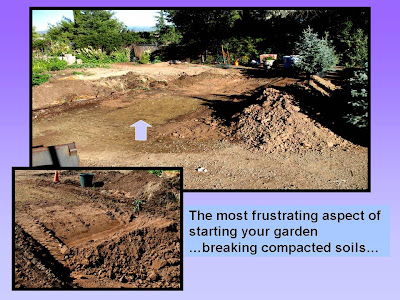4 parts – existing and/or native soils (cultivate and loosen as deep as possible before adding amendments)
2 parts – Soil Mender Topsoil
2 parts -- Soil Mender Composted Cotton Burrs
5 lbs. per 100 sq. ft. – Soil Mender Planters II
5 lbs. per 100 sq. ft. – Yum Yum Mix
5 lbs. per 100 sq. ft. – Soil Mender Stimulate (Molasses+Humates)
Soil amendments (backfill for containers and raised planters):
2 parts – High Country Gardens potting soil or Sungro #902 and/or #702 potting soils
2 parts – Soil Mender Topsoil
1 part – Soil Mender Composted Cotton Burrs
1 part – existing site and/or native soil
5 lbs. per 20 cu. ft. – Soil Mender Planters II
5 lbs. per 20 cu. ft. – Yum Yum Mix
5 lbs. per 20 cu. ft. – Soil Mender Stimulate (Molasses+Humates)
40 lbs. per 20 cu. ft. – Scoria (vesicular lava)
Notes:
1. 1 cu. yd. = 27 cu. ft., Example: 1 cu. yd., 4 in. deep, will cover 81 sq. ft.
2. We used these named “Soil Mender“ products, because they are readily available in Northern New Mexico and are composted. Good composting techniques will kill most weed seed and is easier to work with when cultivating. These amendments are not the only sources, they are just the ones we used.
3. We also added coffee grounds, compost, worm castings, old potting soils, and other products, when available.
4. We tried to be 90-95% ‘organic’ in our approaches to soil preparation. Like anyone else, we’d like to minimize our exposure to toxic materials.










